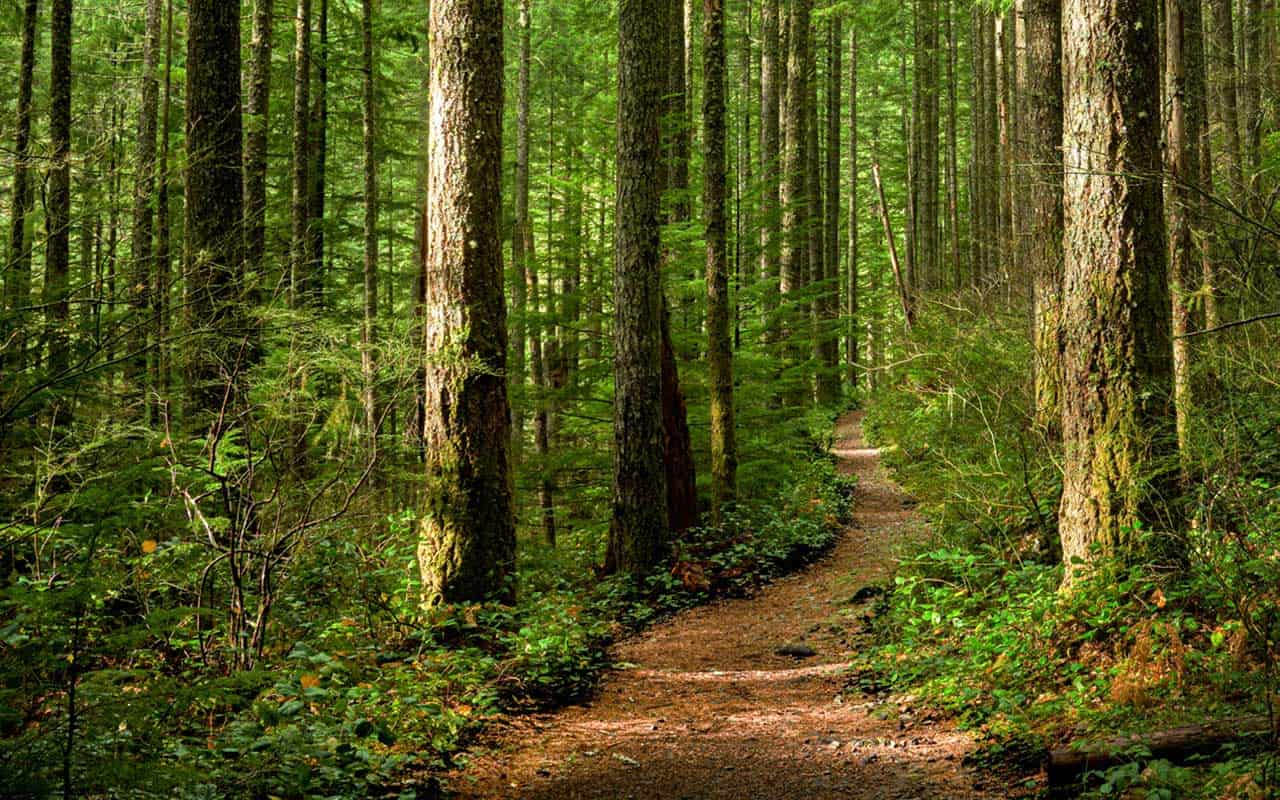Our Environment, Animal Tips & the Great Outdoors

Forests of the Northeast and Climate Change
For at least 15,000 years, we residents of planet Earth have been living in a relatively stable and warm world. Before that, five ice ages came and went. “Glaciologically speaking,” the BBC’s online Science page tells us, we are experiencing an “interglacial” age, defined as such because the Arctic, Antarctica, and Greenland still exist – more or less (actually just less), as time-release photography of the two polar caps is documenting.
We know that the ice caps are melting much faster than anticipated, that oceans are rising, and that corals (living creatures sensitive to the slightest change in deep-sea temperatures) are dying, their colorful branches turning a ghostly white from the Pacific to the Caribbean. But let’s move from the depths of our oceans to the heights of our forested expanses, specifically in the Northeast. Are they showing signs of disturbance related to climate change? They are, but it’s complicated.
From trees to lakes to acid rain
As the glaciers of the last current quarternary ice age were receding in what would become,14,000 or so years later, New Hampshire, herbaceous pioneer plants – the first, hardy colonizers of the newly formed rocky tundra – took hold. During the ensuing millennia, spruce emerged and receded and the present-day White Mountains were covered in conifers, aspen, oak, and white pine, soon – in geological terms – to be followed by sugar maple, hemlock, and beech. We know this from studies of the pollen imbedded in the sediment of Mirror Lake, within New Hampshire’s Hubbard Brook Experimental Forest.
Founded in 1955 by the US Forest Service as a site for hydrology studies, Hubbard Brook landed squarely on the scientific map in 1963, when Gene Likens, fresh from Dartmouth, and his team calculated acid levels were up to 100 times those expected in freshwater samples. Nine years of research later, they published their discovery of “acid rain,” confirming the link between the combustion of fossil fuels and the increased acidity of precipitation as an accelerator of environmental change. (For this work, Likens was awarded the 2001 National Medal of Science by President George W. Bush.)
The most heavily wooded
It is no accident that two preeminent forest study centers – the nearly 8,000-acre Hubbard Brook and Harvard Forest, the university’s 3,500-acre research site in central Massachusetts – are located in the Northeast. With 80% tree cover, this nine-state region is the most heavily wooded in the US. It wasn’t always so.
A paper by lead author Jonathan Thompson, a Harvard Forest ecologist and Smithsonian researcher in conservation biology, summarizes land-survey records over four centuries from Maine to Pennsylvania. Anything but dry reading, it’s a story that picks up after 10,000 years of settlement by native peoples, who burned relatively small forested areas to plant food, and extends through the Colonial era; from 1650 to 1850 logging and agricultural clearing removed more than half of the region’s forests. The enormous geo-database compiled for the study is a record of resilience –“The Northeast wants to be a forest,” says Thompson – as well as of significant change. Maples have exploded while oaks, beeches, and chestnuts have declined, depriving wildlife of the tree nuts they depend on in winter.
As the Erie Canal became a commercial gateway westward and large-scale farming moved to the open (easier to cultivate) plains, some northeastern woods bounced back. This rejuvenation was counterbalanced, however, in the mid-19th century by tree removal to make way for the railroads and increased development. The Hudson River School of Painting, America’s first formal school of art, celebrated natural landscapes as divinely ordained. Decrying the denuding of nature in the service of industrial progress, these artists were early environmentalists. A local anecdote has it that President Theodore Roosevelt’s commitment to conservation was spurred when, returning to New York City from a visit to the Erie Canal, he passed through a devastation of logged trees.
There’s no new old growth
Though forests, however transformed by man and climate, can rebound, one category of forest by definition does not: old growth, which in the Northeast represents only one percent of standing trees. Chris Roddick, for many years chief arborist at the Brooklyn Botanic Garden, tells us, “In the old-growth forests, you had hemlocks that were six or seven feet in diameter and chestnut trees 200 feet tall.” Today very little east of the redwoods looks remotely like those ancient trees. But a recent discovery in the Catskill Mountains has made old growth seem new.
In 1870, pieces of petrified wood and fossilized tree stumps were unearthed in a stone quarry near Gilboa, NY, west of Albany. Nothing much happened of any note until, in the 1920s, the quarry was excavated for the construction of Gilboa Dam, after which the quarry was backfilled. At that critical moment, pioneering paleontologist Winifred Goldring (1888-1971) identified fossilized seed ferns, which led to her creation, for the New York State Museum in Albany, of the first diorama of ancient plant life.
More time passed. During a dam-maintenance project in May 2010 that quarry was partially emptied and researchers monitoring the project along with New York City’s Department of Environmental Protection found preserved remains of tree roots and trunk bases that were identified as going back 386 million years, when this part of the Hudson Highlands was where Morocco is today. (Don’t ask.)
Gilboa’s petrified forest is now considered the oldest on the planet. One of the reporting authors of Nature’s March 1, 2012, cover story, William Stein*, a professor of biological sciences at the State University of New York’s Binghamton campus, has described the impact as “like discovering the botanical equivalent of dinosaur footprints.” (Note for nitpickers: this forest preceded the dinosaurs by 150 million years.)
And – now?
And what of the present? Growing seasons for canopy trees – trees tall enough that their crowns cast sufficient shade to cool local environments – are lengthening, which should increase plant productivity and nutrient cycles. However, warming has already begun to affect the geographic distribution of certain conifers, like red and white spruce, and sugar maples, whose ranges are predicted to shift farther north while southern species of oak and pine do the same. Such shifts in forest composition, noted the late Gary Lovett, a fervent champion of trees who worked with Millbrook’s Cary Institute and the Hubbard Brook forest, will affect food webs, which in turn will disrupt wildlife as well as alter forests’ ability to buffer air pollution and store carbon.
The idea of shifts is a scientifically potent one. The greatest, most consequential forest of all, the boreal forest, circles the globe just under the Arctic, and its concentration of trees is our world’s prime carbon sponge, nature’s key defense against climate change. It was once thought that, with warming, the boreal forest would just expand northward, but new “Earth system models” from the Lawrence Berkeley National Lab predict shifts instead, much like those in our hardwood forests. The result: carbon absorption from the atmosphere will be reduced as the boreal forest itself is reduced, with grasslands taking over the abandoned southern range; and, while grasslands do store carbon in their soils, they cannot compensate for the amount of carbon that fails to be sequestered when trees are fewer.
According to forest ecologist Charles Canham, the most vulnerable trees in the Northeast will be the balsam fir, white spruce, and northern white cedar, whose mortality rates rise with temperature. But for the time being 60% of adult trees in the eastern US die from being cut down. “I am less hopeful than some people are about our ability to mitigate climate change, due to its irrefutable impact in the Arctic,” says Canham, “but the temperate forests of North America are likely to be the most resilient of any biome on the planet.”
Habitat fragmentation
More immediately destructive to our great Northeastern forests are habitat fragmentation and loss due to pests. While forest-management experts work to prevent long-term ecosystem collapse – in human terms a generation is 25 years; in tree terms it’s a century – the clearest and most present danger to trees is imported disease. Naturalist David Burg, founder of NYC Audubon, ranked the proliferation of non-native pathogens as third – after encroaching development and environmental toxins – among the biggest threats to our forests.
Although today’s pathogens enter our ecosystems via a relatively new vehicle – the container ships of global trade – there’s nothing new about the scourge of invasion.
In the early 20th century, chestnut blight, a fungus transmitted via wind-borne spores, entered North America on Japanese nursery stock and by 1940 had obliterated the American chestnut from its eastern range. The gypsy moth was deliberately imported in 1868 to create a hybrid silk-spinning caterpillar that would be more resistant to disease than native silk worms are. Twenty years later the first outbreak occurred, and a hundred years later nearly 13 million acres of forest (primarily oak but other hardwoods too) had been defoliated.
Dutch elm disease was introduced by an Ohio furniture-maker in the 1930s, and beech bark disease, which entered Maine in 1929, has migrated to North Carolina and Tennessee. Recent infestations – of the emerald ash borer, the hemlock woolly adelgid, and the Asian longhorn beetle – have continued the rampage.
As trees are increasingly stressed by both pests and warming – and less snow insulating their root systems – some tree species may be either greatly reduced or eliminated. And with those disturbances others will follow, as birds and hibernating animals seek, quite literally, higher ground. The beauty and dynamism of our northern forests are intimately connected to their complexity, and protecting that biodiversity is not only the work of forestry schools, labs, and ecologists but of us all. •
This article was adapted from the author’s original, first published in The Bulletin, the Garden Club of America’s national quarterly, in spring 2017.
*Now Professor Emeritus, Stein has co-authored a book, The Catskill Fossil Forest, based on recent discoveries about what has become the expanded forest and new definition of “world’s oldest.” See binghamton.edu/news/story/3780/the-first-trees-preserving-the-worlds-oldest-forest-in-upstate-new-york for more details.



